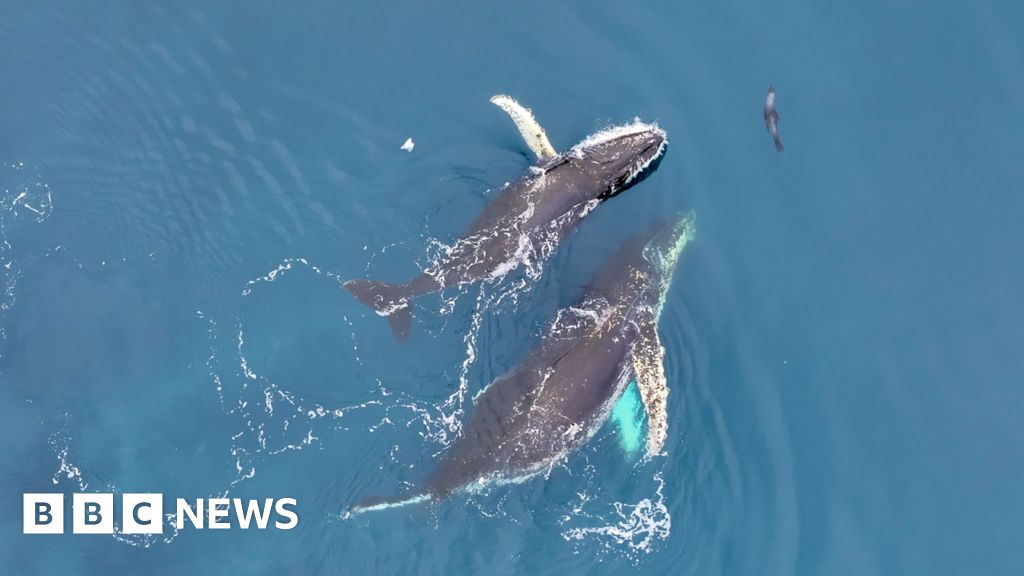Drone footage of humpback whales reveals how these animals maneuver their entire bodies while eating.
In footage filmed by BBC News with scientists on the Antarctic Peninsula, a whale uses its four-metre-long fins to sweep a web of bubbles around its prey and trap it, known as a “bubble net.”
“The flick of the flipper really shows the adaptability and creativity of these animals,” said Dr. Ari Friedlander of the University of California, Santa Cruz.
Dr. Friedlander said humpback whales are “more acrobatic” than other whales of similar size.
Chris Johnson, a global whale expert at wildlife charity WWF, said the “bubble net” solitary whales we see “use their fins as tools” to catch krill, with Antarctic whales eating more than a ton of the tiny carapace every day Animal-like.
Humpback whales are the only species known to produce these individual “bubble webs.”
This behavior can only be observed in detail from the air, so the use of drone cameras has revolutionized scientists’ ability to study it.
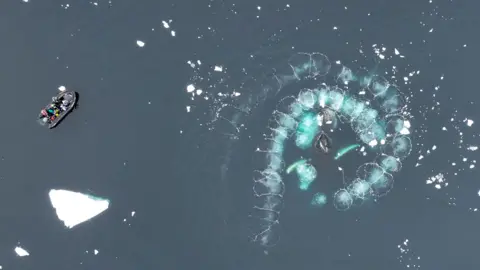 Research under license from Chris Johnson/WWF/UCSC/NOAA
Research under license from Chris Johnson/WWF/UCSC/NOAAAerial views provided by drones also shed light on the recovery of whale populations in parts of the world where whales were hunted to the brink of extinction in the 20th century.
An international team of researchers, including some from the British Antarctic Survey (BAS), used drone cameras to study whales on South Georgia, a key site for Antarctica’s whaling industry.
BAS researcher Stephanie Martin has shared with the BBC what she says is the first drone footage of a mother and calf of a southern right whale off the coast of South Georgia.
“Seeing a mother and her calf facing each other [here] This is a strong indicator that these populations are slowly recovering,” she said.
She and her colleagues also filmed Antarctic blue whale mothers and calves – the largest animals on Earth – feeding in the same area.
Before the 1930s, an estimated 40,000 blue whales were hunted by whalers in the waters off South Georgia.
Ms. Martin said it was not until 2020 that researchers discovered giant mammals in these waters again. A survey that year Fifty-eight sightings of adult blue whales have been recorded there.
shrunken whale
Scientists can also use drones to measure whales’ bodies. There is evidence that some animals are actually shrinking, which scientists believe is linked to climate change affecting their food supplies.
A study just Published in the journal Global Change Biology It has been revealed that the number of gray whales that hunt in the shallow waters off the Pacific Northwest coast has declined significantly over the past two decades.
Gray whales born in 2020 are expected to be 1.65 meters (5 feet 5 inches) shorter as adults than gray whales born before 2000.
Researchers say this could be an early warning that the population is beginning to decline or become unhealthy.
“Size is crucial for animals,” said Dr. Enrico Pirotta of the University of St. Andrews.
“It affects their behavior, their physiology, and it affects the ecosystems they’re a part of.”
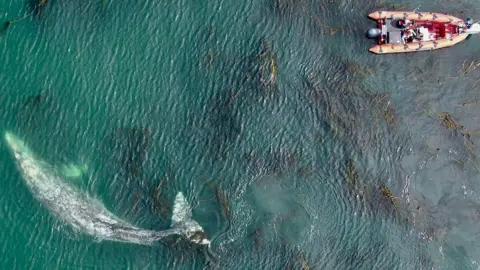 Kevin C. Bierlich
Kevin C. BierlichNot only are drones helping researchers monitor new threats to whales, they are also providing new clues about some fascinating marine mammal behavior.
By filming humpback whales feeding together (something we witnessed firsthand in Antarctica), scientists have gained insight into how these animals learn and cooperate.
“[When we’ve studied humpbacks] For feeding in Alaska and along the U.S. coast, the rules are very clear,” Dr. Friedlander said.
“Usually one animal blows a web of bubbles around its prey, while the other animals play their own roles.
“In Antarctica we often see multiple animals in enclosures blowing bubbles at the same time.”
Researchers are still trying to understand what this means, but some suspect that Antarctic whales may still be learning their feeding techniques and haven’t yet “perfected” them to give each animal a role.
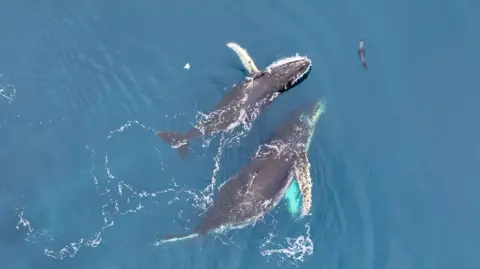 Research under license from Chris Johnson/WWF/UCSC/NOAA
Research under license from Chris Johnson/WWF/UCSC/NOAAWhen asked whether the behavior we witnessed – humpback whales spinning, circling our boat, and even interacting with other species – could be described as “play,” Dr. Friedlander said yes.
“They have the opportunity to be curious and interact with new objects or each other,” he said.
“It strengthens social connections, which I think is absolutely critical for them.”
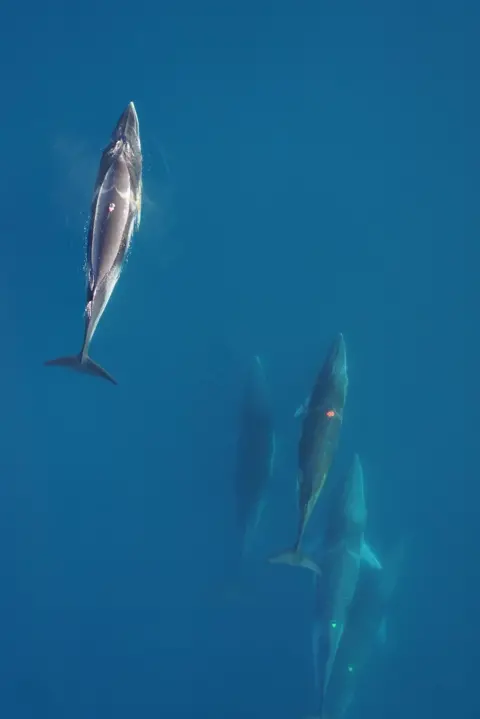 Ari Friedlaender/UCSC/NMFS License 14809, ACA and UCSC IACUC License
Ari Friedlaender/UCSC/NMFS License 14809, ACA and UCSC IACUC License 
